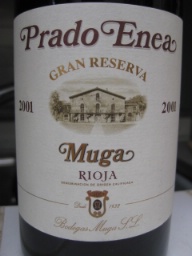Posts Tagged ‘Garnacha’
 W.E.T.C.O.W. Wine Tasting Event #8 – Wines of Spain
W.E.T.C.O.W. Wine Tasting Event #8 – Wines of Spain
 For this wine tasting event, we explore wines from one of the oldest wine producing regions in the world – Spain.
For this wine tasting event, we explore wines from one of the oldest wine producing regions in the world – Spain.
Spain Wine Industry Facts:
- -Most Acres of Planted Vines In the World
- -3rd Largest Wine Producer (low-yielding old vines, dry infertile soil, wide spacing)
- -Long history of grape-growing – Phoenicians 1100BC.
- -Resurgence in mid-late 1800s – phylloxera epidemic
- -Region Classifications: Denominacion de Origen (DO)
- -Rioja & Prioriat Regions – DOC (Calcifada)
- -Rioja DOC -Tempranillo is the dominant red grape variety with Garnacha (Grenache), Graciano, and Mazuelo grapes also permitted
General Characteristics – Spanish Wines:
- -Historical use of extended oak aging
- -Old vines – hot, dry climate, clay soils
- -Ripe Fruity Grapes – High Sugar – High Alcohol
- -Minerality – earthiness
- -4 DO Categories, based on amount of aging
- -Juven – young wine – no aging requirements.
- -Crianza – 2 years with at least 1 year in oak
- -Riserva – 3 years with at least 1 year in oak
- -Gran Riserva – 5 years with at least 2 yrs in oak
Here are our results:
| Taster |
Sierra Cantabria Rijoa 2008 $9.00 |
Bodegas Anteca Garnacha de Fuego 2009 $6.99 |
Borsao Tres Picos 2009 $13.00 |
Bodegas Volver La Mancha 2008 $13.00 |
Muga Prado Enea Gran Riserva Rioja 2001 $59.00 |
|
|
|||||
| Al B. |
86 |
88 |
87 |
90 |
86 |
| Sue B. |
87 |
88 |
84 |
86 |
77 |
| Eric D. |
81 |
77 |
92 |
85 |
90 |
| Zelma D. |
89 |
88 |
78 |
91 |
82 |
| Felix G. |
88 |
82 |
89 |
94 |
90 |
| John M. |
80 |
87 |
88 |
85 |
84 |
| Marlene M. |
86 |
92 |
83 |
79 |
74 |
| Angie O. |
76 |
89 |
76 |
90 |
82 |
|
|
|||||
|
|
|||||
|
|
|
||||
| Average Score: |
84.1 |
86.4 |
84.6 |
88.8 |
84.4 |
PHYLLOXERA
Mid 1800s Europe. – Spain was relatively spared. It hit France first and the hardest. French winemakers moved to Spain and setup wineries there, bringing with them more advanced wine making techniques. This was like the renaissance period of the Spanish Wine industry. AGING The Spanish tradition and necessity of aging both red and white wines for an unusually long period of time (a twenty-five year aging period was not uncommon) has always been debated. Supporters of the practice argue that the Tempranillo grape, like pinot Noir, needs a good deal of time to develop the earthy complexities it is capable of. While today´s Spanish wines are aged less than their predecessors, a long aging process is still par for the course.
OAK
American oak tends to be more intensely flavoured than French oak with more sweet and vanilla overtones. french Oak lends more subtle and spicy tones. Winemakers that prefer American oak (including a long tradition for Spanish winemakers) typically use them for bold, powerful reds. High end Rioja producers will sometimes age their wines up to ten years in American oak to get a earthy, vanilla character and soften the tannins. Some combine that with aging on French oak barrels, to get the characteristics of both.